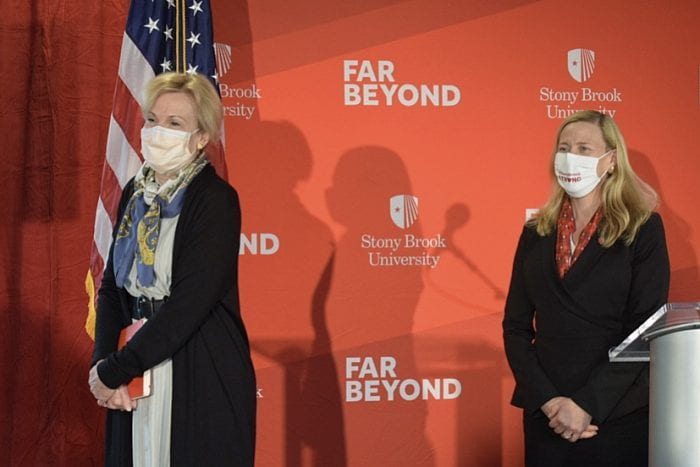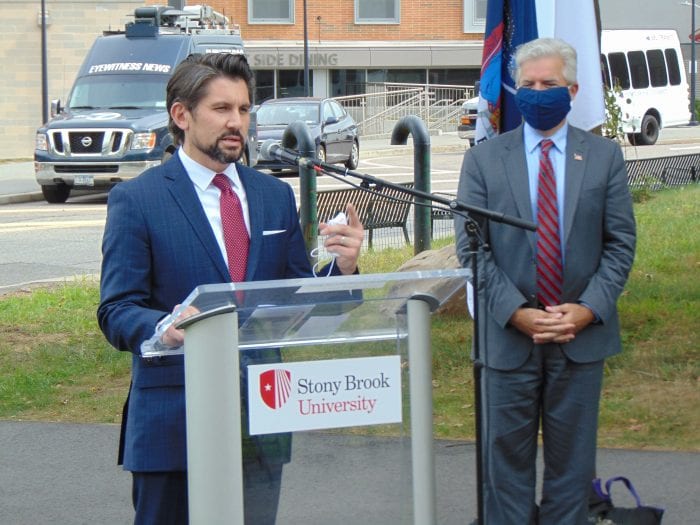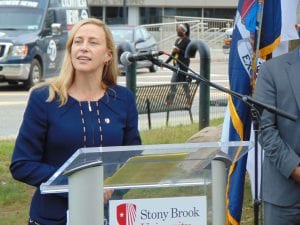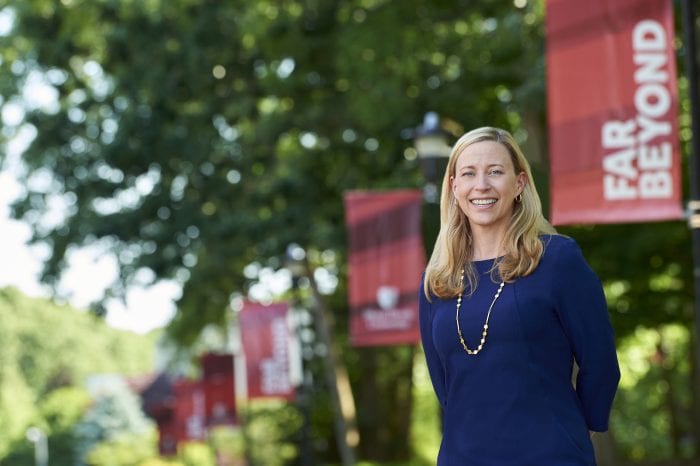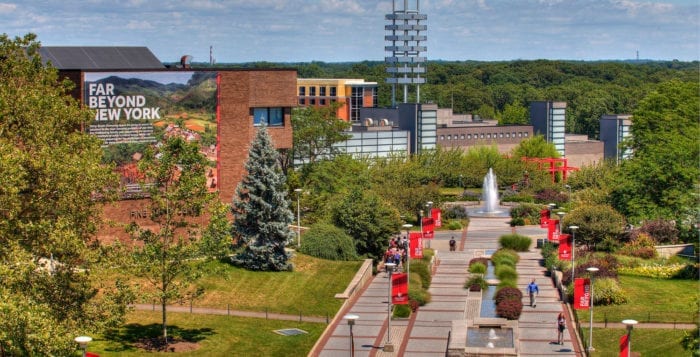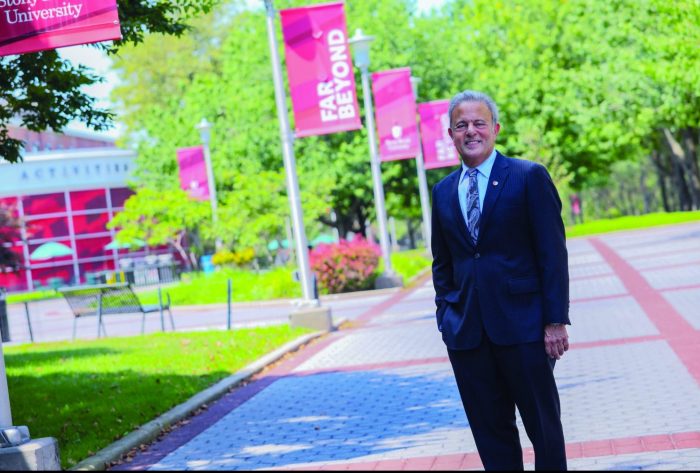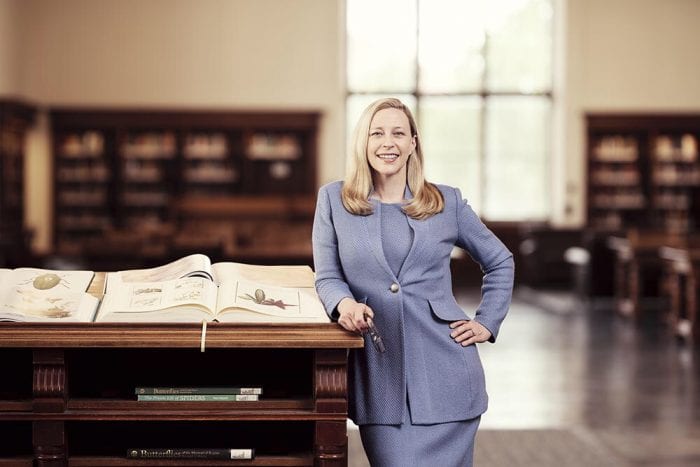The head of the White House’s Coronavirus Task Force visited Stony Brook University this week to talk to faculty, students and administrators about college life during the pandemic.
On Wednesday, Oct. 7, Dr. Deborah Birx met in a private roundtable talk with SBU representatives to gauge how everyone feels returning to campus, as part of a several-month-long tour of colleges across the country. The meeting lasted more than two hours, president of the university Dr. Maurie McInnis said, deeming it a successful discussion.
“We want to find a pathway forward for other universities, and when we want to use what we have learned to make it available to others.”
— Dr. Deborah Birx
“She was excited about what we’ve been doing on campus and at the hospital,” McInnis said. “We also learned an enormous amount from her about what we can expect in the fall.”
The roundtable went over time, and so Birx only gave about 15 minutes to assembled reporters.
With recent news of many colleges across the state struggling to stay open with an uptick in COVID-19 cases on their campus, Birx praised the university for how they initially handled the pandemic back in March, up until now.
She added that she was particularly excited to visit Stony Brook because the university and hospital “stood out at one of the most difficult times in March, April and May in a really open, transparent and careful way.”
“I was listening to the research activities that they started from day one,” she said. “And it thrilled my heart to hear from them that their number one thing was collecting data and collecting information in real time.”
Birx said the university’s research was fundamental in the beginning, by comparing and trying to understand how to find solutions with better care for patients.
“That’s why we have medical research institutions,” she said. “I think you could really see the strength of that here.”
She commended staff for their “months of planning” by implementing social distancing throughout the campus with signs, stickers on the floor and seating placed six-feet-apart from each other — things she hopes other colleges and universities will follow.
“We want to find a pathway forward for other universities, and when we want to use what we have learned to make it available to others,” she said. “It’s been really a privilege to be here.”
Reporters asked the head of the president’s coronavirus task force about President Donald Trump (R) testing positive for COVID-19, his trip to Walter Reed National Military Medical Center and his most recent return to the White House, especially his apparent eschewing of wearing a mask for photo ops despite being contagious.
Birx replied, “We have been on the road, so I’ve been very concerned about what’s happening in the rest of America.” She added she would not question the judgement of the Walter Reed doctors, and she is “very proud of the physicians, between the Navy and the army, that are caring for him.”
During her visit, she asked for insight from students, asking them for their comments and concerns for the remainder of the school year.
“Meeting with students and really understanding what the university did to make sure that the students and the community were safe, I think really needs to constantly be applauded,” Dr. Birx said. “And I think understanding what’s happening with the commuting students and ensuring that they’re safe, has also been really important.”
Birx asked students for insight regarding communication with family members during holiday gatherings this upcoming season.
“I think there are still people waiting for the epidemic to look like it looked before,” she said. “It’s not going to look like that. It’s not going to be a workplace driven epidemic. It is going to be what we’ve seen across the south — where it involves family members, social occasions and spreading silently in communities before and outside of the workplace.”
But she also mentioned what she’s anticipating, and her own, personal, concerns.
“I feel like at this moment, in many of the areas of the Northeast county by county, we still don’t have enough what we would call ‘eyes on the epidemic,’” she said. “What do I mean by that? Really active surveillance sites so that we can see early infections before we see hospitalizations, so we can do community mitigation.”
By having eyes on the virus, it can be more easily contained especially among non-sick asymptomatic individuals.
“I think working with the county, the university can use their data and their ability to translate information to be in regular communication with the community about where the virus is and where it isn’t,” Birx said.
“We’ve demonstrated that we can learn, live and work together safely,” McInnis said.
But before Birx left, she gave one big piece of advice for heading into the fall season. “Please get your flu shot.”

